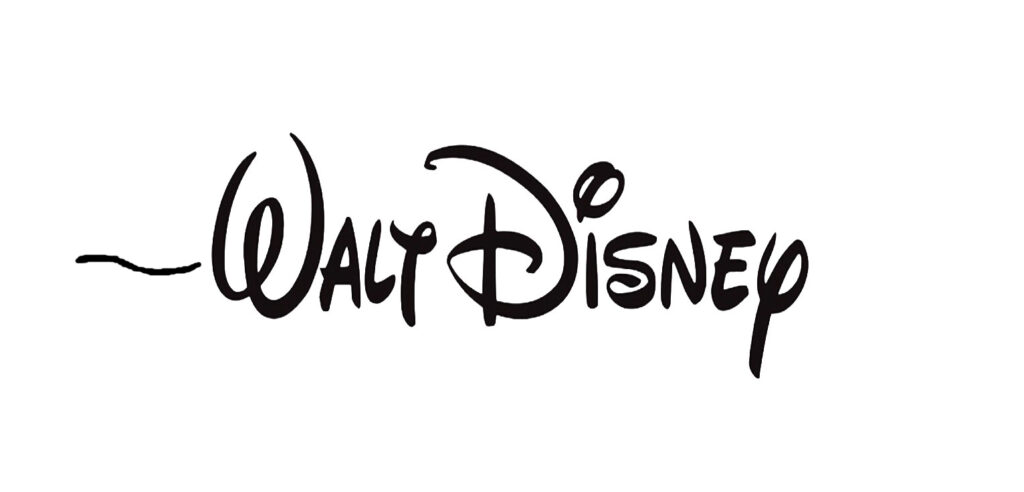DWARFS STEAL THE SHOW
The screen fades to black and now the film presents a whole new delightful surprise. So far it has established an already powerfully-engrossing storyline involving the romantic or dramatic relationships of four realistically-drawn human characters – the “Snow White half” of its title. Now for the other half, the “and the Seven Dwarfs half”. Imagine the amazement of first audiences – already thoroughly charmed and deeply involved – upon meeting this cast of fresh new characters after a quarter of the movie has already transpired. Comparable perhaps to the sudden appearance of Yoda halfway through the first Star Wars sequel (Episode V) – only here times seven!
Initial planning portrayed these dwarfs as identical little men, but Walt wisely decided that each must be a uniquely identifiable personality and distinct in appearance as well.
…The characterization of the dwarves was a vital, comic element which Disney exploited to the full, the personality of each dwarf being painstakingly constructed during dozens of story conferences, until the dwarfs were almost a part of the Disney staff.[1]
Walt knew what he wanted and prodded his artists along until he got it. Animator’s Johnston and Thomas described his inspiring stimulation:
We sat entranced as Walt talked about these seven little men who were becoming as much flesh and blood as the person sitting next to us… These characters were dealing with life and death problems… And each according to his own personality. This was real character acting, and it was all so easy when Walt explained how it should be.[2]
The personalities of the seven little men were elaborated mostly in accordance with the monikers that were eventually assigned to them…
…from a pool of about fifty potentials, including Jumpy, Deafy, Dizzy, Hickey, Wheezy, Baldy, Gabby, Nifty, Sniffy, Swift, Lazy, Puffy, Stuffy, Tubby, Shorty, and Burpy.[3]
My personal favorite suggestion was Biggo Ego.
At the end of the October [1934] story meetings, however, only Doc, Grumpy, Bashful, Sleepy, and Happy of the final seven were named; the other two dwarfs were named Jumpy and “Seventh,” who was deaf and spry.[4]
“Deafy” was retained for a long while but got replaced eventually with Sneezy. Dopey’s development took considerably longer.
At first, it was reported that he was going to be a chatterbox, but then someone came up with the marvelous idea of enhancing his endearing witlessness by having him remain silent (also provoking the comment that he was patterned after Harpo Marx).[5]
Walt himself observed…
“Dopey was the toughest of all. The boys just couldn’t seem to get him. They tried to make him too much of an imbecile. Dopey wasn’t an imbecile. Finally I thought of a way to put him across: make him a human with dog mannerisms and intellect… That solved it.”[6]
Even though some real-life dwarfs were invited to the studio for the observation of animators, the seven who appear in Snow White are no run-of-the-mill realistic little men. Their design and movement bear no resemblance to the human characters already introduced. Just for starters, unlike the Queen, the Prince, the Huntsman and Snow White herself, these dwarfs have classically cartoony four-fingered hands. But it’s not just their hands, no, their entire design and their movement are drawn much more “cartoon”-like. They come directly out of the fairytale tradition such as J.R. Tolkein (1892-1973) evoked in his great Lord of the Rings novels – diminutive in size, ancient of days, miners who amass great treasure dug out of the bowels of the earth, not so much for the purpose of accumulating great wealth but rather to satisfy their compulsion to hoard. Although Disney’s seven do acknowledge in their song “Dig Dig Dig” that mining precious gems is an easy way to “get rich quick”, they also profess that “it’s what we like to do…we don’t know what we dig ’em for… we dig, dig, digga-dig dig!”
[1] From Bailey, Adrian: Walt Disney’s Wonderful World of Fantasy, Everest House Publishers, New York, 1982, p. 117.
[2] Johnston, Ollie, and Thomas, Frank: op. cit., p. 395.
[3] Snow White ad the Seven Dwarfs (the film) from Wikipedia.
[4] Ibid.
[5] Maltin, Leonard: The Disney Films, Crown Publishers, Inc., New York, 1973, p. 30. Harpo was the speechless member of famous comedy trio the Marx Brothers, immensely popular during the 1930s and ’40s.
[6] Thomas, Bob: Walt Disney’s Art of Animation, Hyperion Books, New York, 1991, p. 68.
